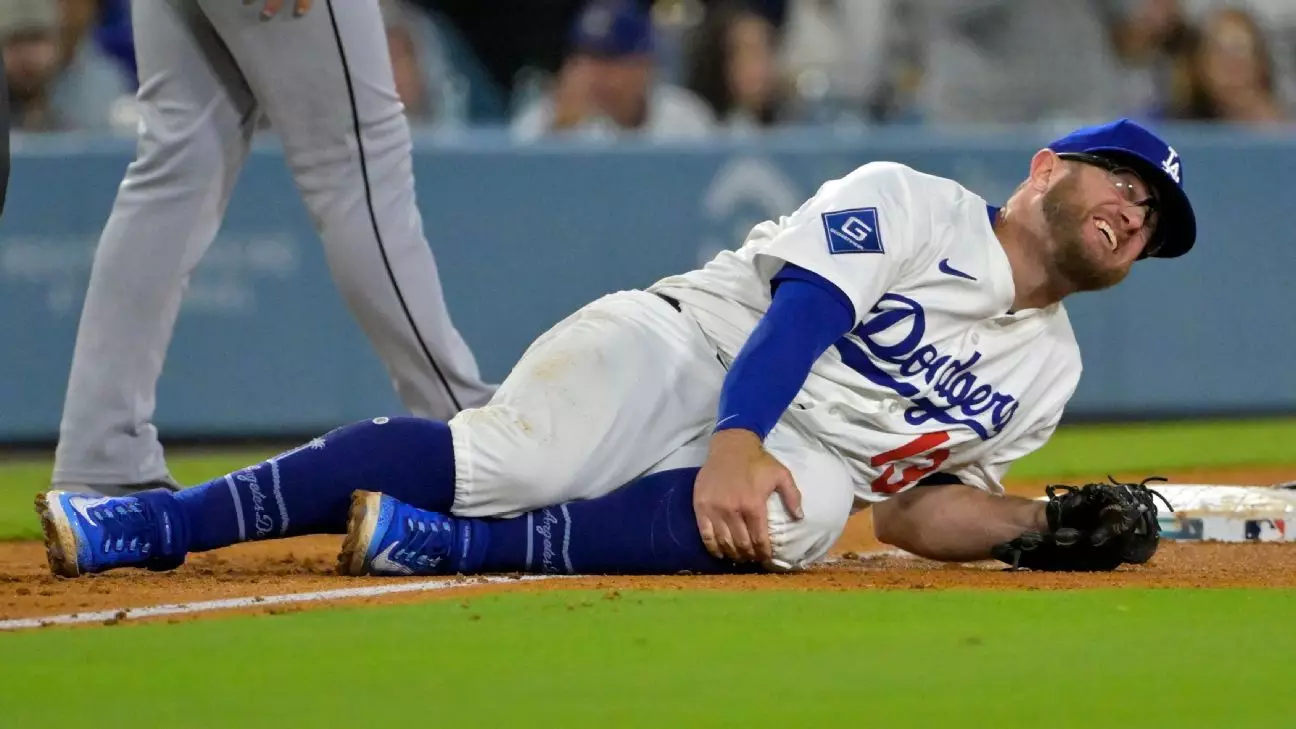In the high-stakes environment of Major League Baseball, few moments are as harrowing as witnessing a teammate go down amidst a play. For Max Muncy, a key figure in the Dodgers’ lineup, that moment arrived unexpectedly. A collision with Chicago White Sox’s Michael A. Taylor during a crucial game resulted in a knee injury that initially cast a shadow over his season. The grim reactions—helping off the field, walking gingerly—painted a picture of severity. Yet, beneath this surface level of concern, there was a flicker of relief: MRI results confirmed no structural damage, sparing Muncy a more frightening scenario of torn ligaments or pronounced tears.
However, the diagnosis does not negate the reality of a six-week absence—a significant hiatus in baseball terms. This period represents not just a physical hurdle but a mental one as well. Muncy’s candid remarks reveal a mixture of relief and frustration. While the absence of severe injury offers peace of mind, the prospect of sitting out nearly two months confronts him with a challenge of mental resilience. This situation underscores how injuries often serve as tests of character, demanding patience and unwavering focus on recovery.
The Unforeseen Consequences of Collision and the High Cost of Play
That collision between Muncy and Taylor was more than just a routine play; it encapsulated the unpredictable dangers of baseball. Muncy was executing a fundamental action—tagging a runner—yet an awkward collision transformed it into an instant setback. The visual of a player sprawled on the ground, unable to bear weight, is stark and unsettling. Meanwhile, Taylor’s injury, a bruised back and a subsequent sore state, exemplifies how collisions, even with seemingly minor impacts, carry ripple effects beyond the immediate.
This incident raises important questions about player safety and the risks athletes accept as part of their profession. While hustle and competitiveness are vital, they often come with collateral damage—a brutal reminder that every play can pivot between victory and disaster. The fact that Taylor cleared concussion protocol yet was still sore indicates how even seemingly minor injuries can brew complications if not carefully managed.
The Emotional Toll and the Human Element Amidst Competition
Beyond the physical injuries, the emotional toll on players is profound. Muncy’s reflection on Clayton Kershaw’s historic 3,000th strikeout reveals a layered perspective—“missed it,” he confesses, emphasizing how moments of personal achievement are often overshadowed by immediate concerns for teammates’ well-being. Such human elements deepen the narrative, illustrating that behind statistics and game scores are athletes with aspirations, fears, and connections.
This episode also highlights how athletes grapple with disappointment. Muncy’s comment about wanting to be on the field during such a milestone underscores a universal desire to contribute and seize moments of glory. Yet, injuries serve as humbling lessons—reminding players that their careers are fragile, and their resilience must be tested repeatedly.
The Strategic Response and Future Outlook
In the wake of injuries, the Dodgers’ organizational response showcases adaptability and strategic foresight. The recall of Esteury Ruiz, a talented outfielder, signifies a proactive approach to maintaining team competitiveness despite setbacks. The team’s adjustments on the fly—replacing injured players and preparing others like Enrique Hernandez and Tommy Edman—illustrate how resilience isn’t just a personal trait but a team-wide ethic.
Furthermore, this incident underscores the importance of depth and flexibility within a squad. As the team navigates the next six weeks without Muncy, it must harness its collective strength, challenge adversity head-on, and prioritize player health. The baseball season is a marathon, not a sprint, and this injury period serves as both a test and an opportunity—one to reinforce resilience, sharpen focus, and come stronger on the other side.
The narrative of Max Muncy’s injury and recovery exemplifies the delicate balance athletes walk: a pursuit of greatness fraught with unpredictable setbacks. But within adversity lies the true test of character—how players and teams respond under pressure can define their legacy. In Los Angeles, a city known for resilience and reinvention, this story of injury, recovery, and hope speaks to the everlasting spirit of baseball.


Leave a Reply